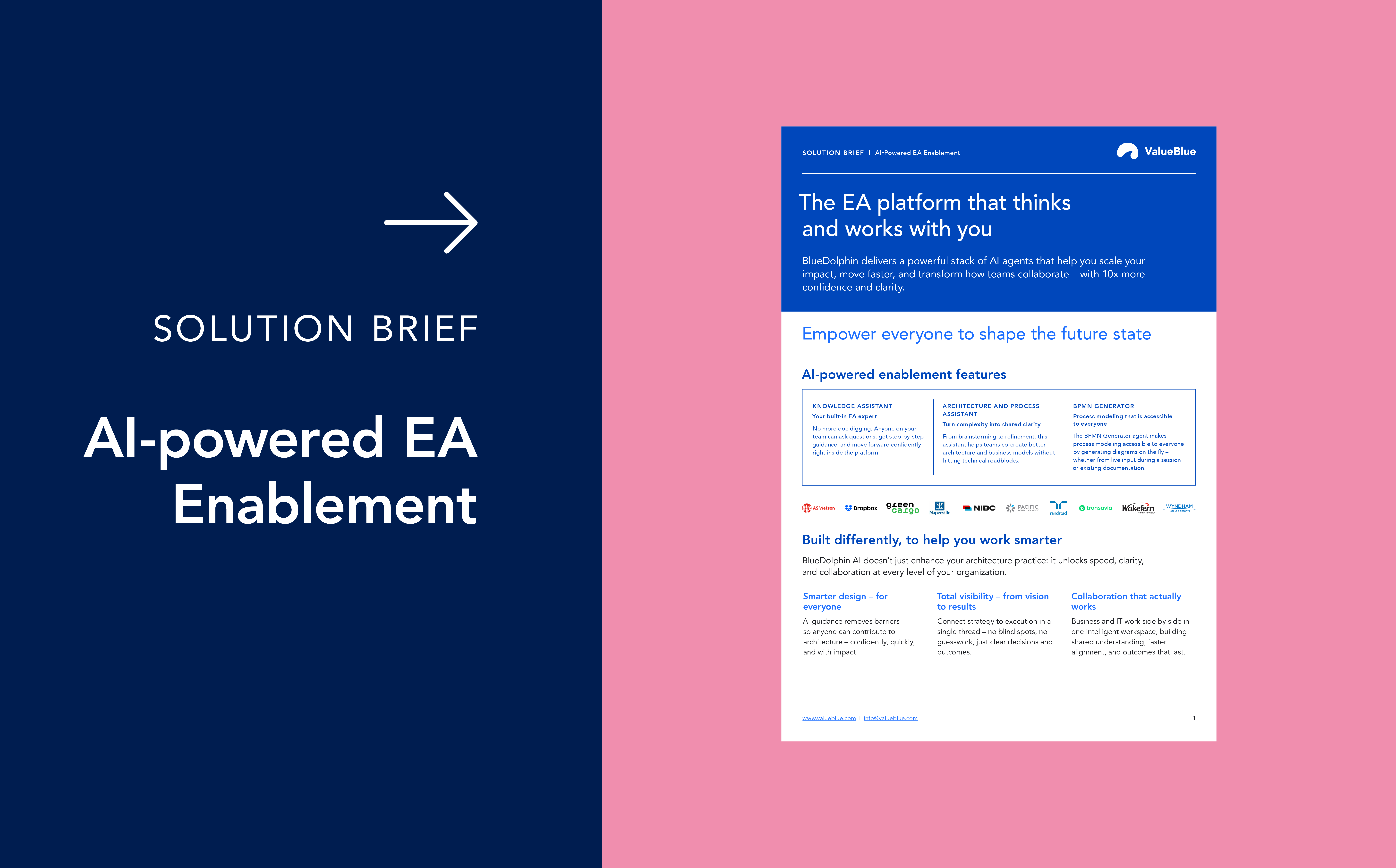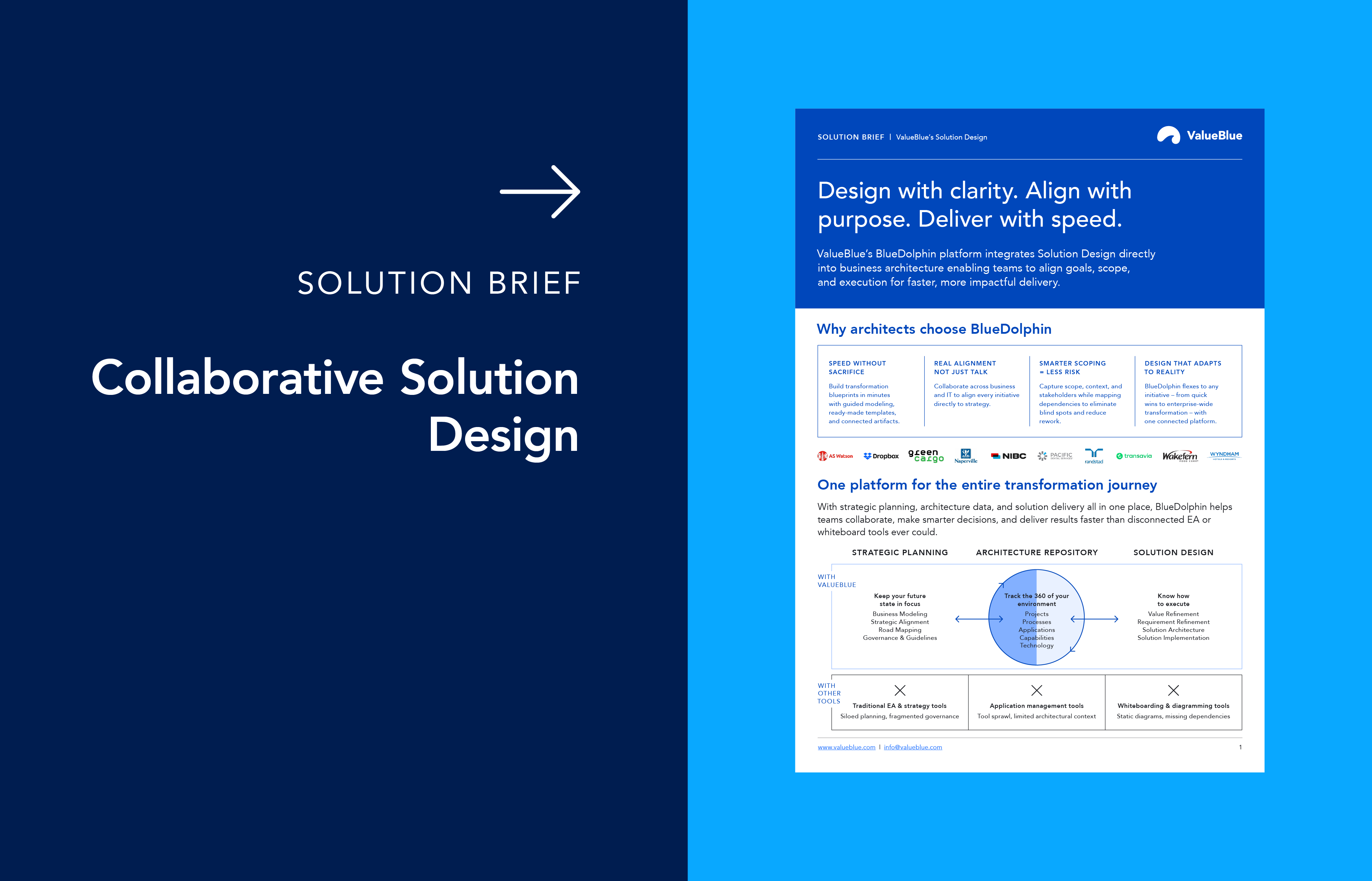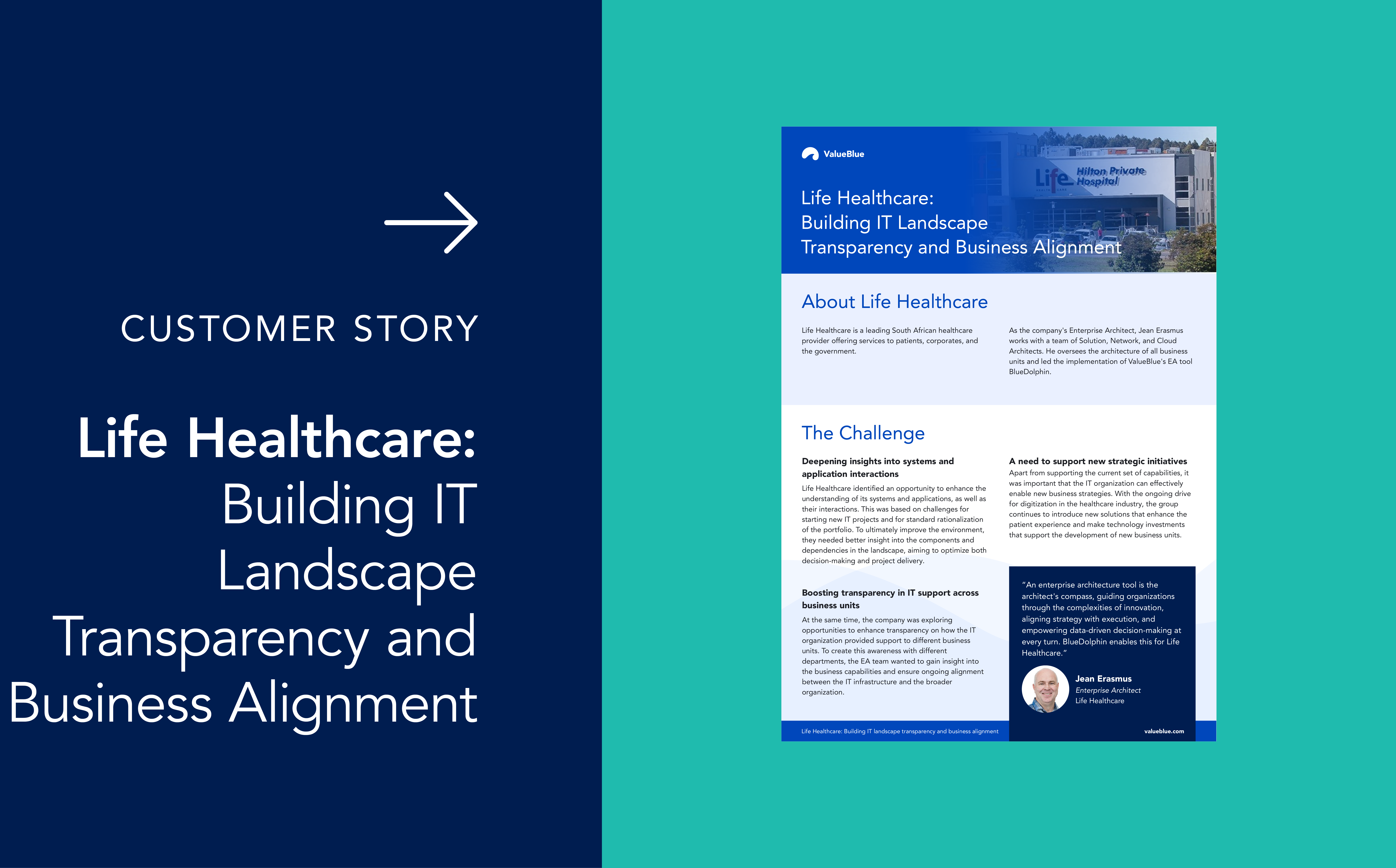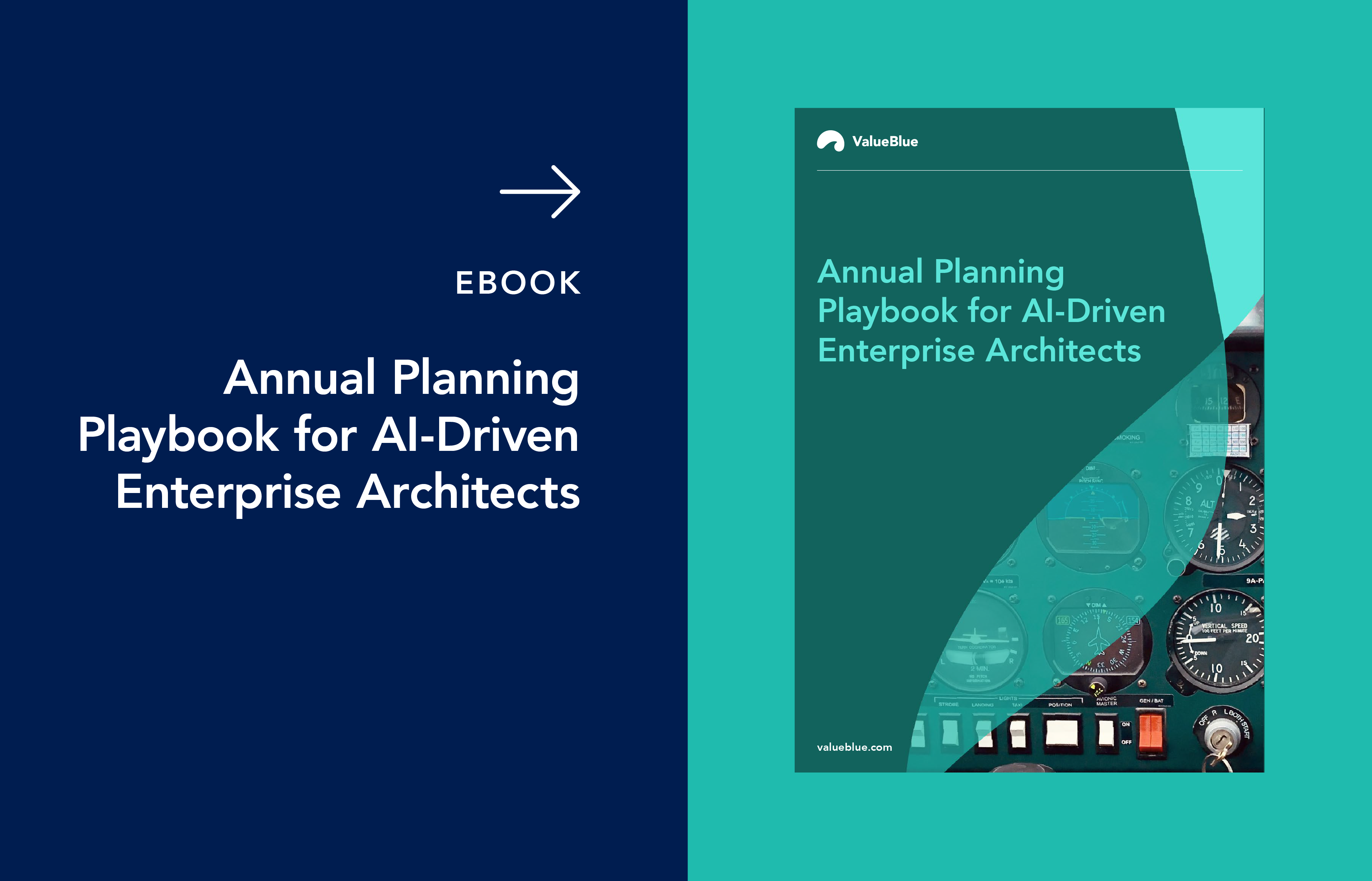Enterprise Architect vs. Solution Architect: Impact on Business
If you’re navigating the world of business IT architecture, you’ve likely come across the roles of Enterprise Architect and Solution Architect. Both are essential for successful digital transformation, but their responsibilities, focus areas, and impact on your organization differ significantly. Understanding these differences – and how each role contributes to your business goals – can help you make smarter decisions, align IT with strategy, and drive more value from your technology investments.
In this blog article, we explain what sets these roles apart, how they work together, and why their collaboration is crucial.
What is an Enterprise Architect?
An Enterprise Architect is responsible for the big picture. This role connects business strategy to IT infrastructure, ensuring that every technology decision supports your organization’s long-term goals. Enterprise Architects work closely with executives and stakeholders to understand what the business wants to achieve, then translate those ambitions into structured plans, policies, and roadmaps that guide IT investments and transformation initiatives.
Key responsibilities of an Enterprise Architect
-
Aligning IT strategy with business goals and vision.
-
Evaluating the costs versus the benefits of a transformation.
-
Agreeing upon a strategic roadmap for projects.
-
Mapping business capabilities to strategic objectives.
-
Defining and maintaining the current and future state of the organization’s architecture.
-
Setting policies, principles, and guidelines for technology choices.
-
Facilitating collaboration between IT and business units.
Enterprise Architects bridge business and IT, ensuring that transformation projects are technically sound and strategically relevant. They provide the “north star” for your organization's direction and help you avoid misalignment between strategy and execution.
What is a Solution Architect?
On the other hand, a Solution Architect focuses on designing and delivering specific solutions that fit within the broader Enterprise Architecture (EA). While the Enterprise Architect sets the direction, the Solution Architect figures out how to get there for a particular project or initiative.
Key responsibilities of a Solution Architect
-
Designing specific solutions that meet business requirements.
-
Ensuring new solutions fit within the enterprise’s overall architecture and policies.
-
Selecting the right technologies, platforms, and integration approaches for each project.
-
Working closely with development teams to translate designs into working systems.
-
Addressing immediate technical challenges and optimizing for efficiency.
Solution Architects are hands-on problem solvers. They connect high-level strategy and on-the-ground implementation, ensuring that what’s built today supports the organization’s future needs.
Strategic vs. tactical: How their focus differs
The distinction between Enterprise Architect and Solution Architect often comes down to strategic versus tactical focus.
-
Enterprise Architects are strategic thinkers. They look at the organization’s long-term vision, driving innovation, and aligning technology with business strategy. Their work involves anticipating future needs, setting standards, and ensuring the business adapts to change.
-
Solution Architects are tactical experts. They address immediate project needs, solve current challenges, and optimize existing processes. They focus on delivering solutions that work today and fit the bigger picture set by the Enterprise Architects.
Both perspectives are vital. Strategic planning creates a roadmap for growth and innovation, while tactical execution ensures that daily business needs are met efficiently.
How Enterprise Architects and Solution Architects work together
Successful digital transformation depends on close collaboration between these two roles. In an organization, there are typically more Solution Architects than Enterprise Architects. Here’s how their partnership typically plays out:
-
Setting the vision: Enterprise Architects work with leadership to define business goals and map them to the required capabilities and technology landscape.
-
Translating strategy into action: Solution Architects take these high-level directions and design specific systems or applications that will deliver the desired outcomes.
-
Providing guardrails: Enterprise Architects set the policies and standards guiding solution design, ensuring project consistency and alignment.
-
Feedback and improvement: Solution Architects provide practical insights from the field, helping Enterprise Architects refine strategies and standards based on real-world experience.
Involving both Enterprise and Solution Architects early in transformation projects helps organizations avoid costly rework. It also reduces project delays and ensures that every solution aligns with the business strategy.
The impact of Enterprise Architects and Solution Architects on business IT architecture
When Enterprise Architects and Solution Architects work together effectively, your organization benefits in several ways:
-
Stronger alignment: IT projects are consistently mapped to business goals, reducing wasted effort and ensuring technology investments deliver real value.
-
Faster transformation: With clear roadmaps and standards, teams can move quickly from strategy to execution, shortening time to value.
-
Greater agility: Capability-based planning and ongoing collaboration allow your business to adapt to change, seize new opportunities, and manage risk more effectively.
-
Better communication: Regular feedback loops and collaborative decision-making foster trust and understanding between IT and business stakeholders.
-
Efficient delivery: Solution Architects ensure that each project is technically sound and fits seamlessly into the larger architecture, minimizing integration headaches and future rework.
Take the next step with collaborative architecture
Understanding the differences between an Enterprise Architect and a Solution Architect is essential. These roles work together to enhance the value of IT architecture. While the Enterprise Architect creates the vision and aligns it with the business strategy, the Solution Architect turns that vision into reality with practical and effective solutions.
Ready to see how seamless collaboration between these roles can accelerate your digital transformation? Request a demo of BlueDolphin today and discover how our platform empowers your team to connect strategy, architecture, and execution for real business impact.





